
After a few days in Singapore, we enthusiastically headed to Bali. We chose to fly with Scoot, the low-cost version of Singapore Airlines, and it must be mentioned that we encountered some problems with buying tickets online, as our cards were not accepted (both Visa and Mastercard). In the end we managed to pay through PayPal, but I admit that they put our nerves to the test.
Otherwise everything turned out ok and here we are in Bali!
Bali is one of the most popular islands for couples in love, who choose to spend their honeymoon in one of the luxury resorts, for those who are adventurous looking for fun, or for those who want to live a more spiritual experience.
With an extreme number of temples, Bali is also called The Island of the Gods because here the connection with the deities is a very important one, each house having a kind of antenna (that’s how I saw it) specially built to “connect” with the deities:

Everywhere you go you will find the famous offerings that the locals make from coconut or banana leaves, in which they add flowers, leaves, food, money, scented sticks depending on the type of offering. In this way they thank their deities, but also to ensure the calming of evil spirits. And they do this three times a day!
Bali has a tropical climate throughout the year, the average temperature being around 30°C (86°F). There are two seasons: one dry, from April to September and another wet, from October to March. For us, June was perfect.
Bali has varied geography, with mountain ranges in the center of the island, where the Agung volcano is located, as well as terraces of rice plantations in the center and south of the island, in addition to coffee plantations in the north, and, of course, the famous beaches.
UBUD
We spent the first 4 days in Ubud, in the center of the island, where we could easily reach many objectives. Because there is no public transport, we organized in advance and rented a car with a driver for two days. The cost for the car, gasoline, parking, and driver was 45 euros/day. We thought it was the best option, because the traffic is infernal, with many scooters that do not take into account the rules of the road, and the roads are not very good. In addition, the internet is quite expensive outside of the wifi zones.
After several attempts to find an English-speaking driver, we managed to contact someone following a recommendation found on Facebook. We sent him the objectives we wanted to visit and set the schedule for the two days. However, I cannot make this recommendation to you, because, although on the first day everything was ok, the next day we woke up with a different driver who did not speak much English and who, at one of the objectives, disappeared for more than 30 minutes. Also, he didn’t know how to get to the last objective and we got a little lost.
Ubud greeted us with warm air and a specific smell throughout the island due to the fragrant sticks used for offerings. From the first steps you realize that it is a special place, but you are struck by the discrepancy between poverty and luxury. On the same unpaved street you will see poor houses, luxury villas, many Balinese massage parlors and, from time to time, a temple that impresses you with its architecture.
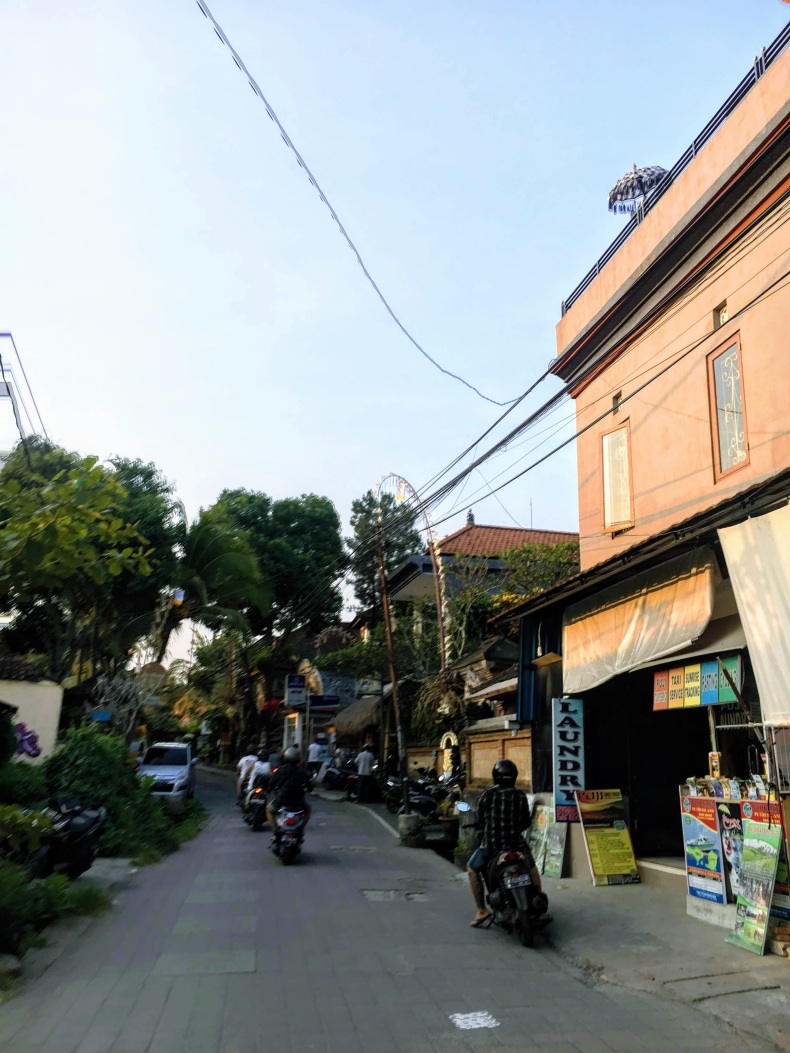
After we checked in at our nice and very clean villa (Adi Bisma Inn) we went for a walk on the streets in the center of Ubud. The first temple that we saw was Saraswati Temple, which also offered us a big surprise, a beautiful traditional Balinese dance show. This temple is the place of worship of the goddess Saraswati (Goddess of Knowledge), and an attraction in itself is the large pond of pink lotus flowers. Admission is free, but for the Balinese dance show you have to pay Rp. 80,000/person. Or, you can have dinner at Café Lotus in the temple for a minimum order of Rp. 200,000, but you’ll be quite far from the stage. I quite liked being in the first row and thus being able to observe the very expressive faces of the dancers.
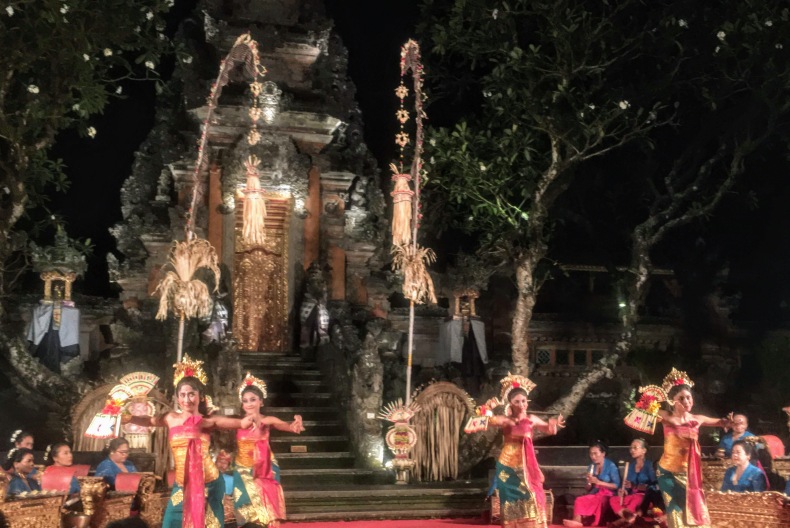
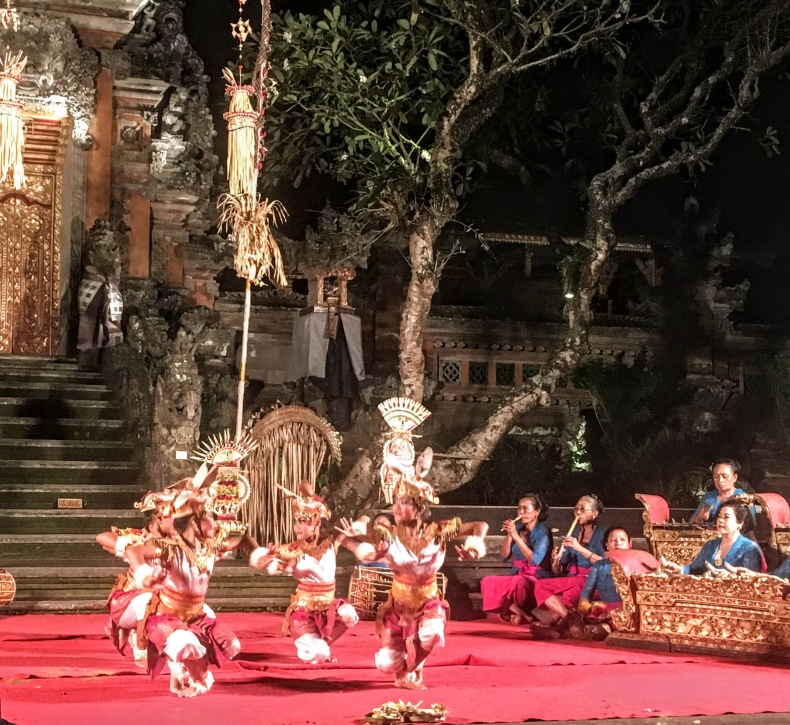
The next day we started at 8:00 am on the following route:
Goa Gajah
The temple is characterized by menacing faces carved in stone whose purpose is to protect from evil spirits. The main figure of the temple resembles an elephant, hence, perhaps, the nickname of the Elephant Cave. The demonic mouth entrance is said to represent the Hindu god of land, Bhoma. The interior of the temple is small, but the complex also contains 7 statues of women depicting seven holy rivers of India, as well as gardens and stone steps that lead you to other beautiful scenery.
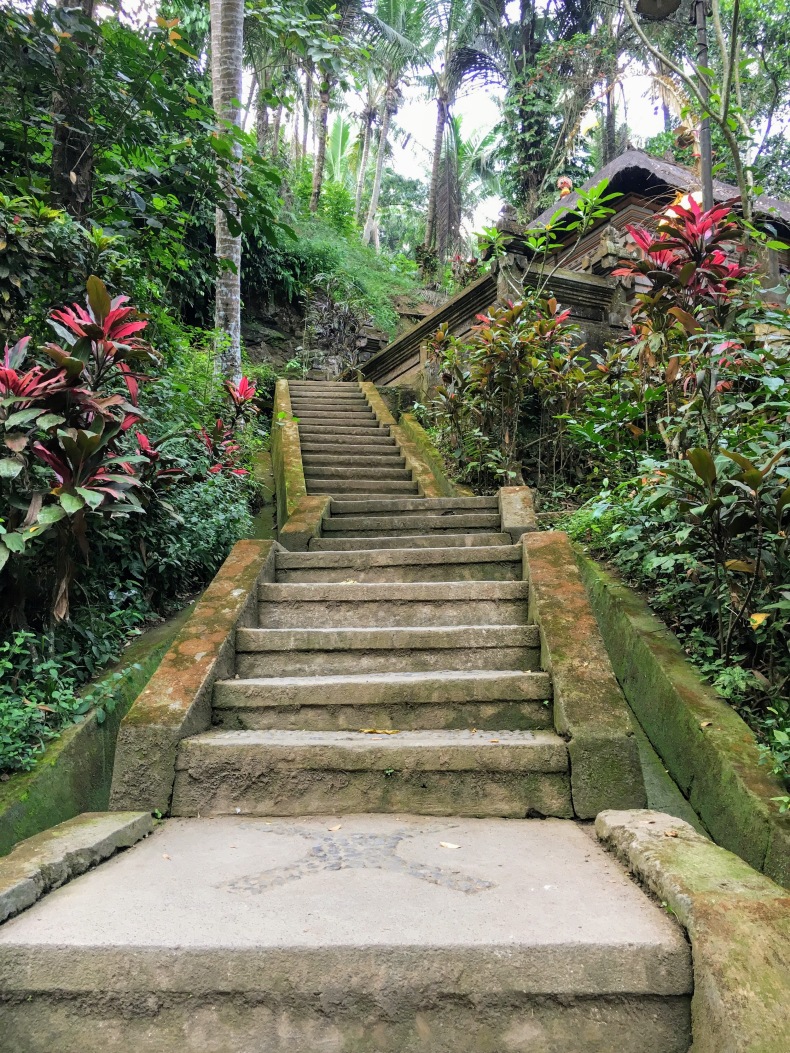
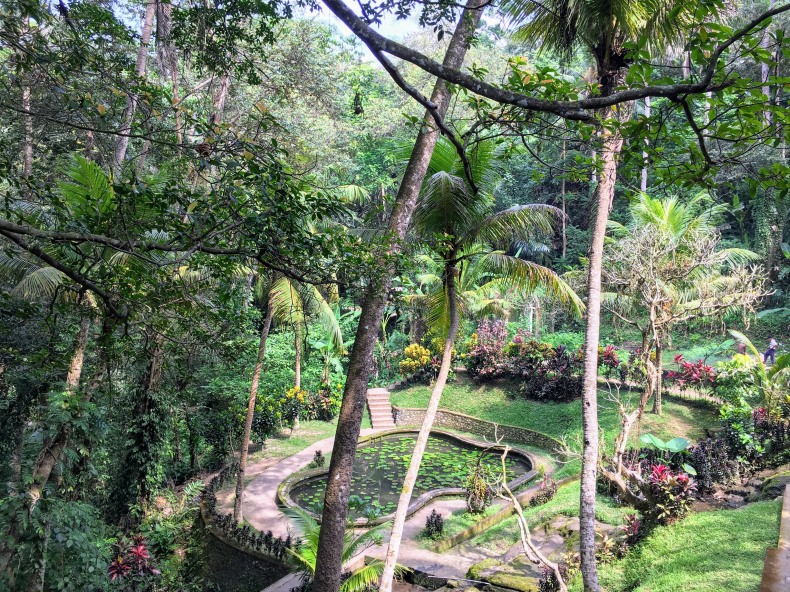
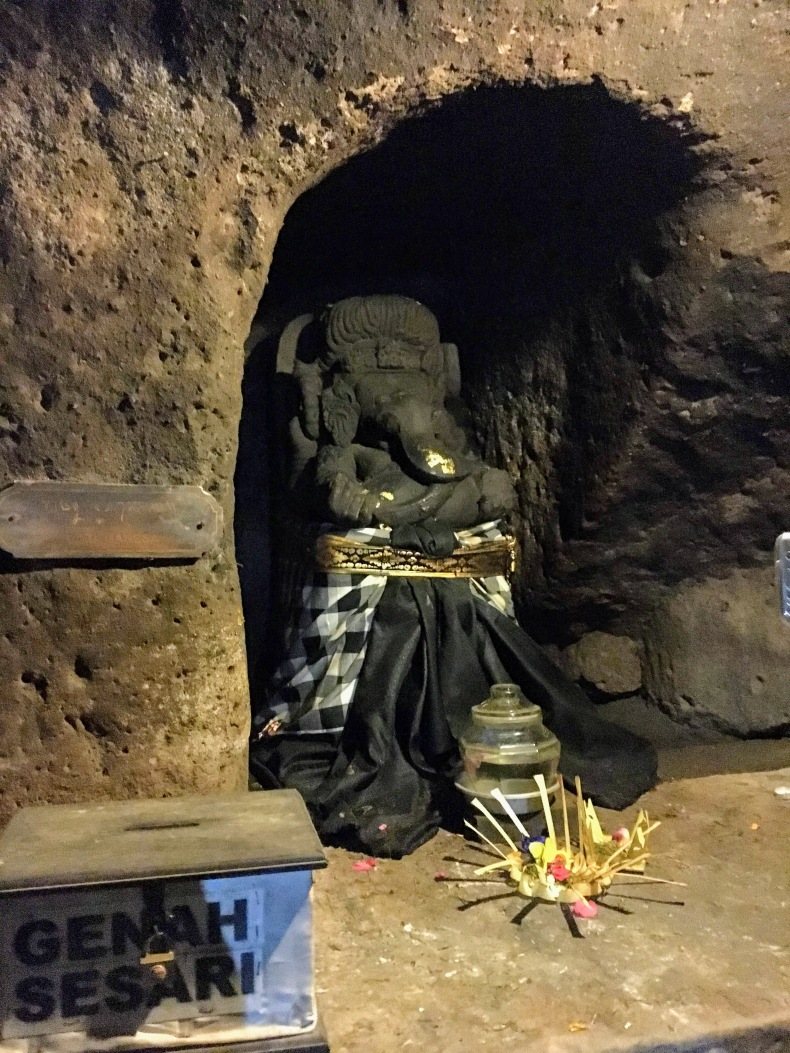
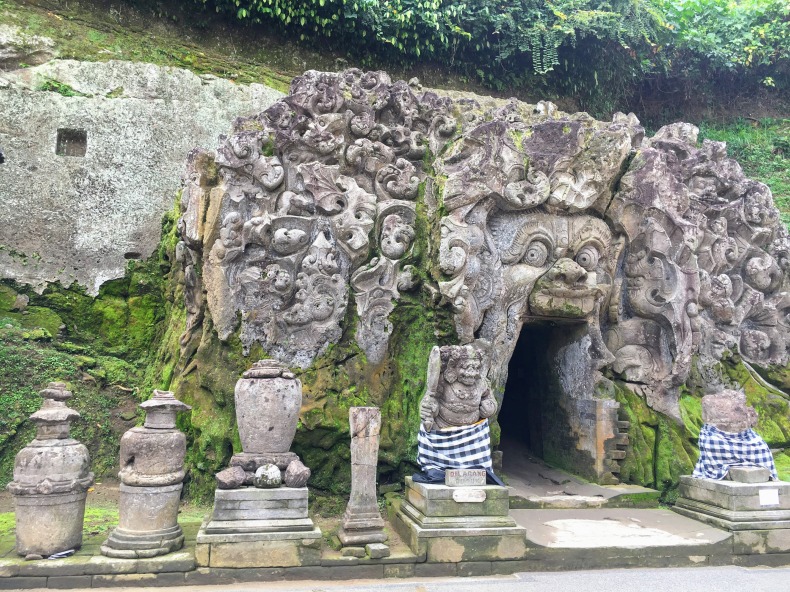
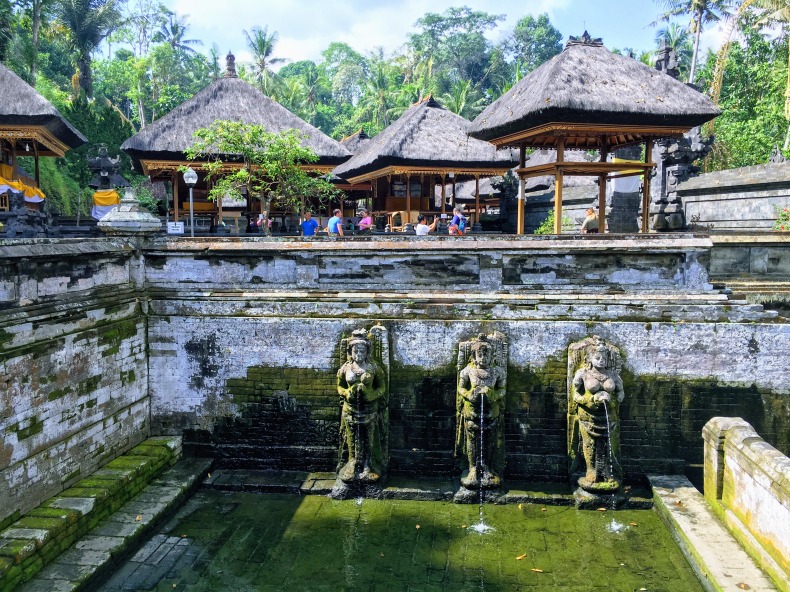
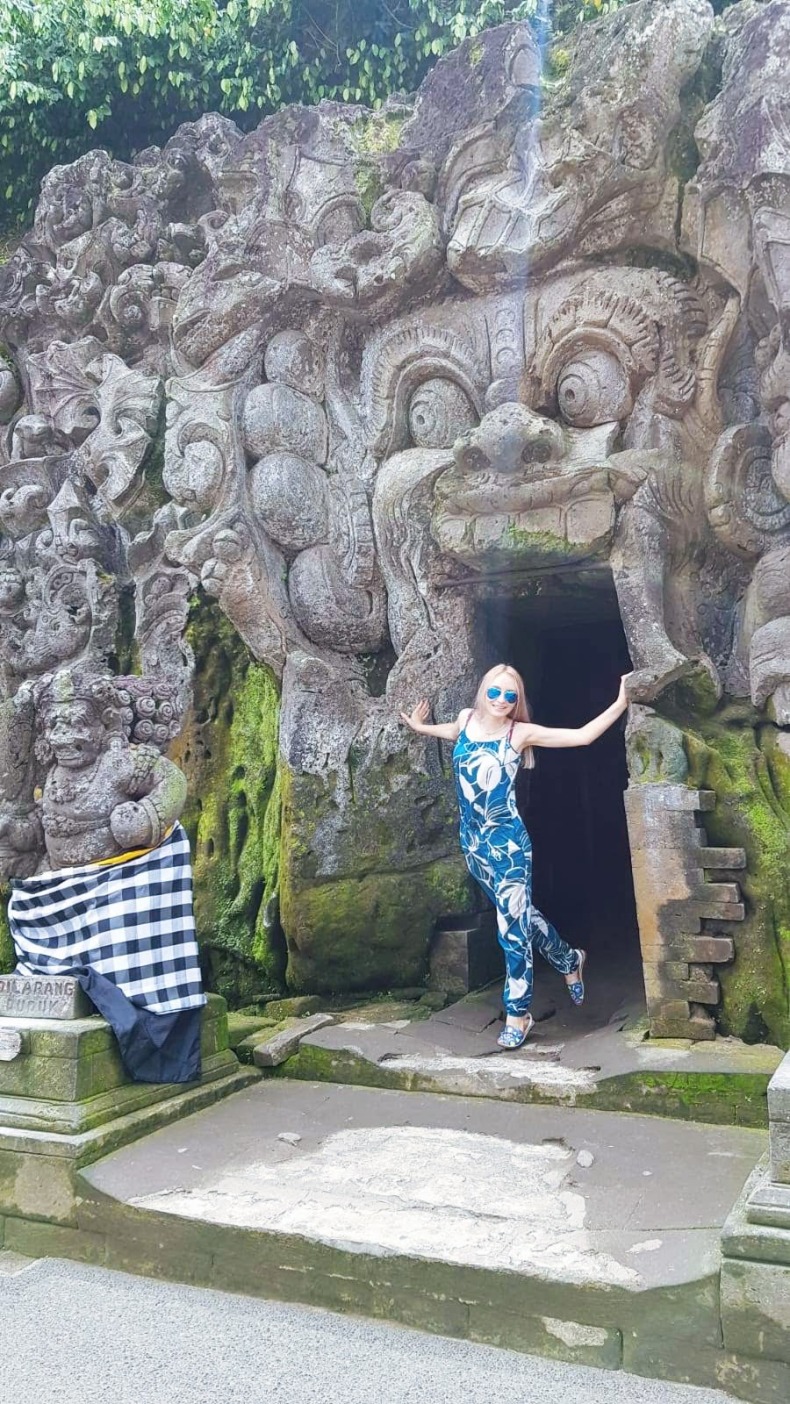
Pura Tirtha Empul Temple
The temple is dedicated to Visnu – the Hindu god of water and is famous for its holy spring water used to purify the body. Tirta Empul means Holy Spring in Balinese. It takes about an hour to explore the entire area which has three main parts. This place amazes you with the architecture of the gates open to the sun, the pagodas and the statuettes that embody the gods, and through the beautifully arranged and clean gardens. Even if it is full of tourists you can feel the religious energy and you can find a moment just for you.

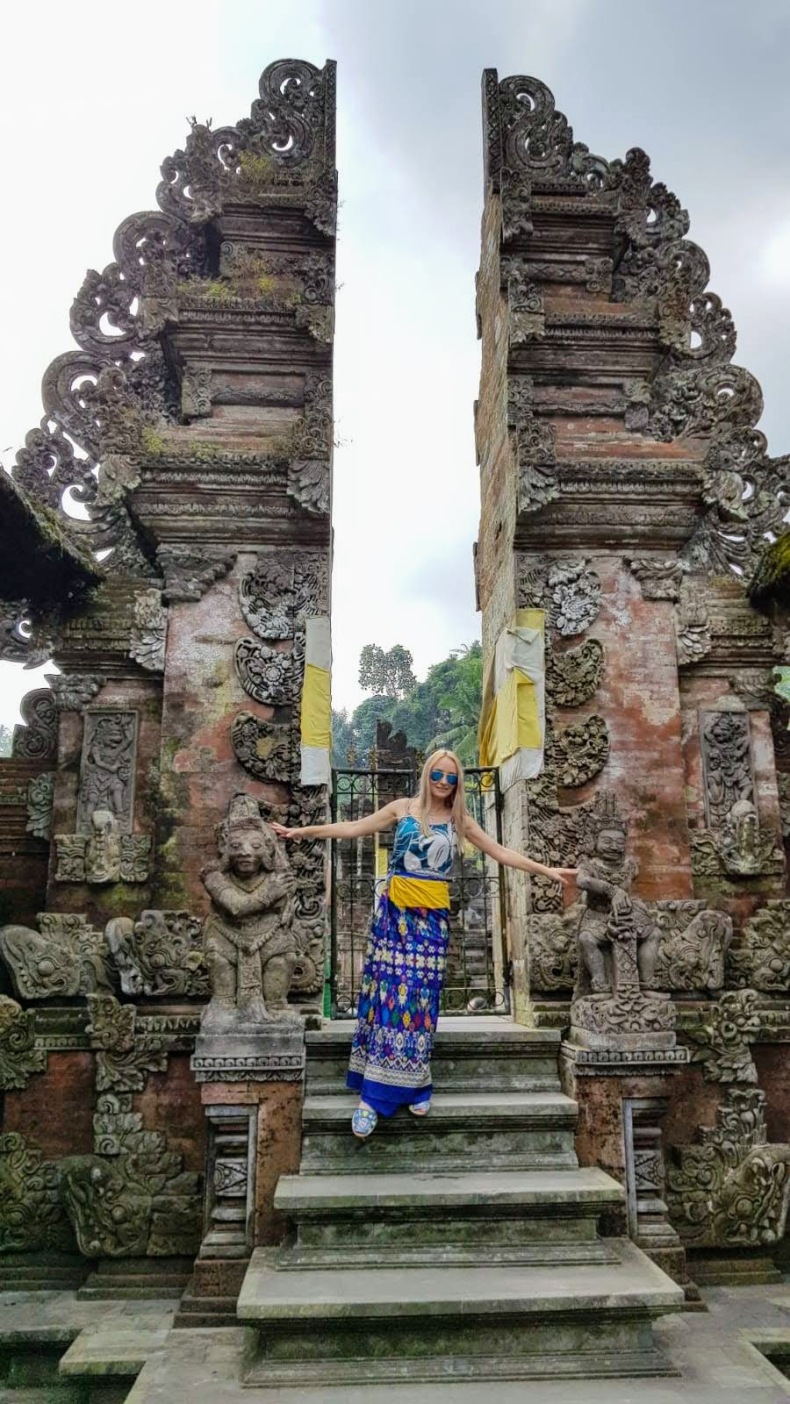
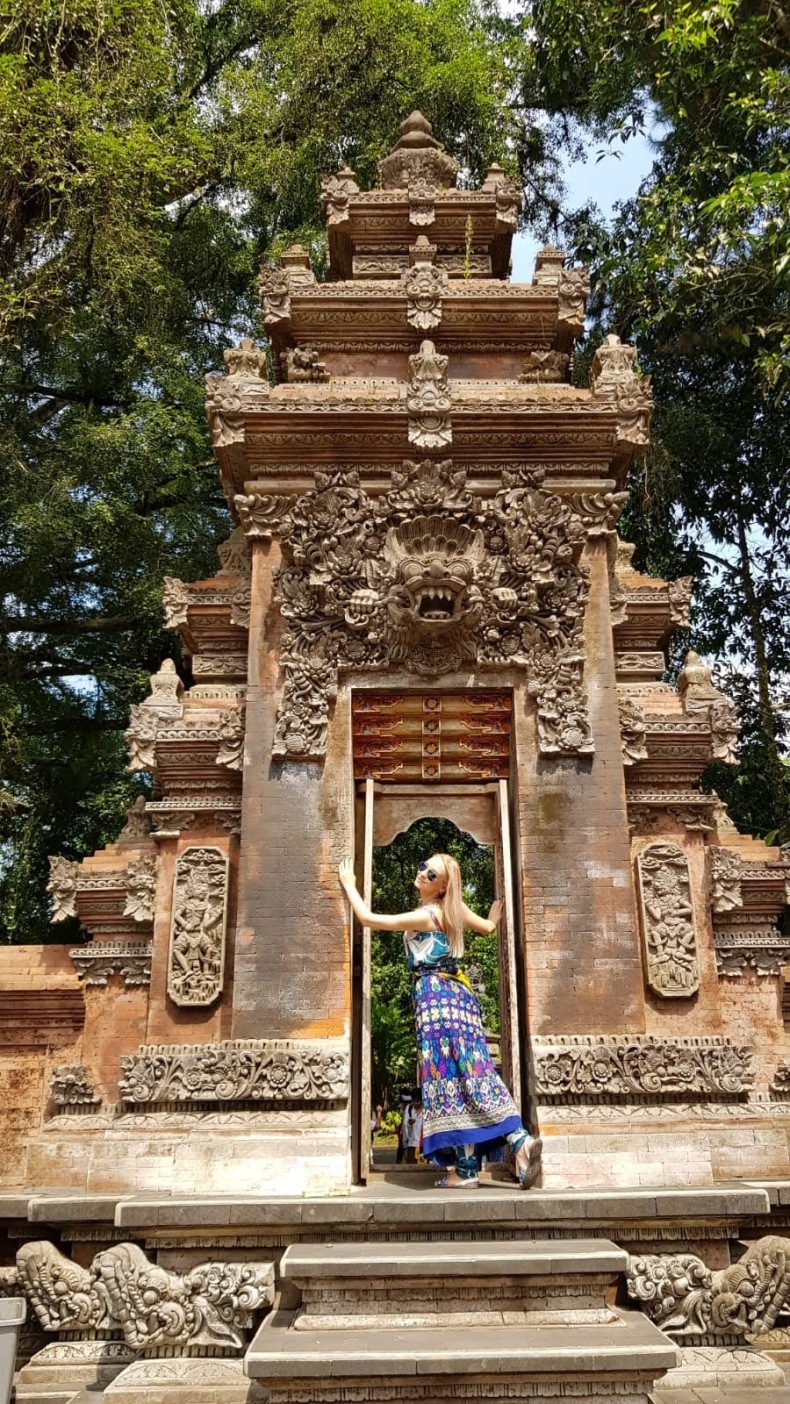
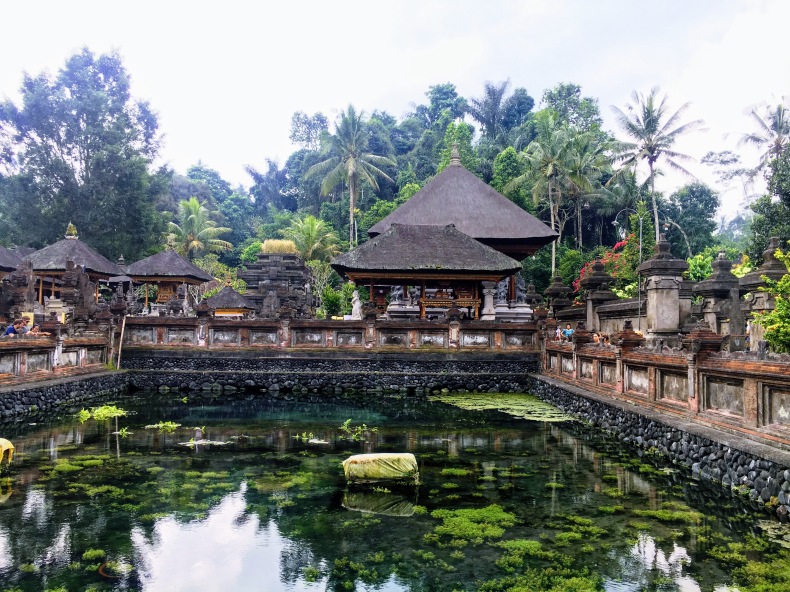

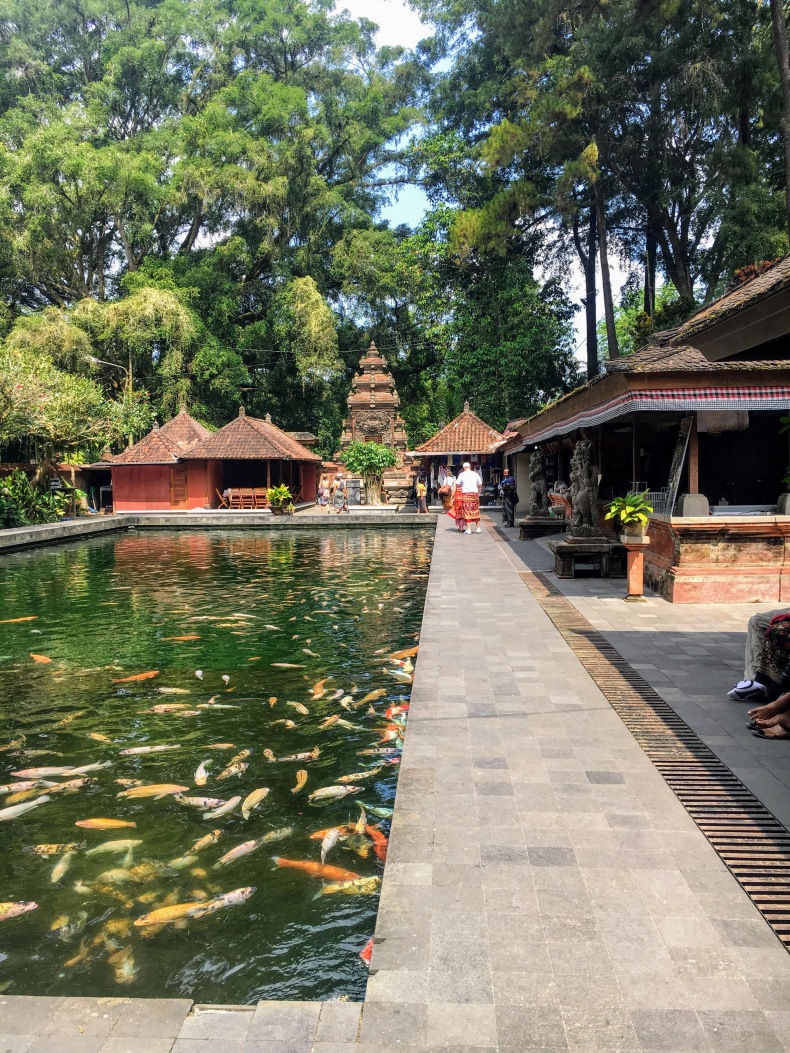
Tegenungan Waterfall
Tegenungan Waterfall is 25m long and is one of the main attractions in Ubud especially for those who love nature. Its advantage is that it is not very far, being easily accessible, and is quite well laid out. You can swim in the crystal clear water of the waterfall, or you can make short hikes. It is also a perfect place for many, many pictures 😊

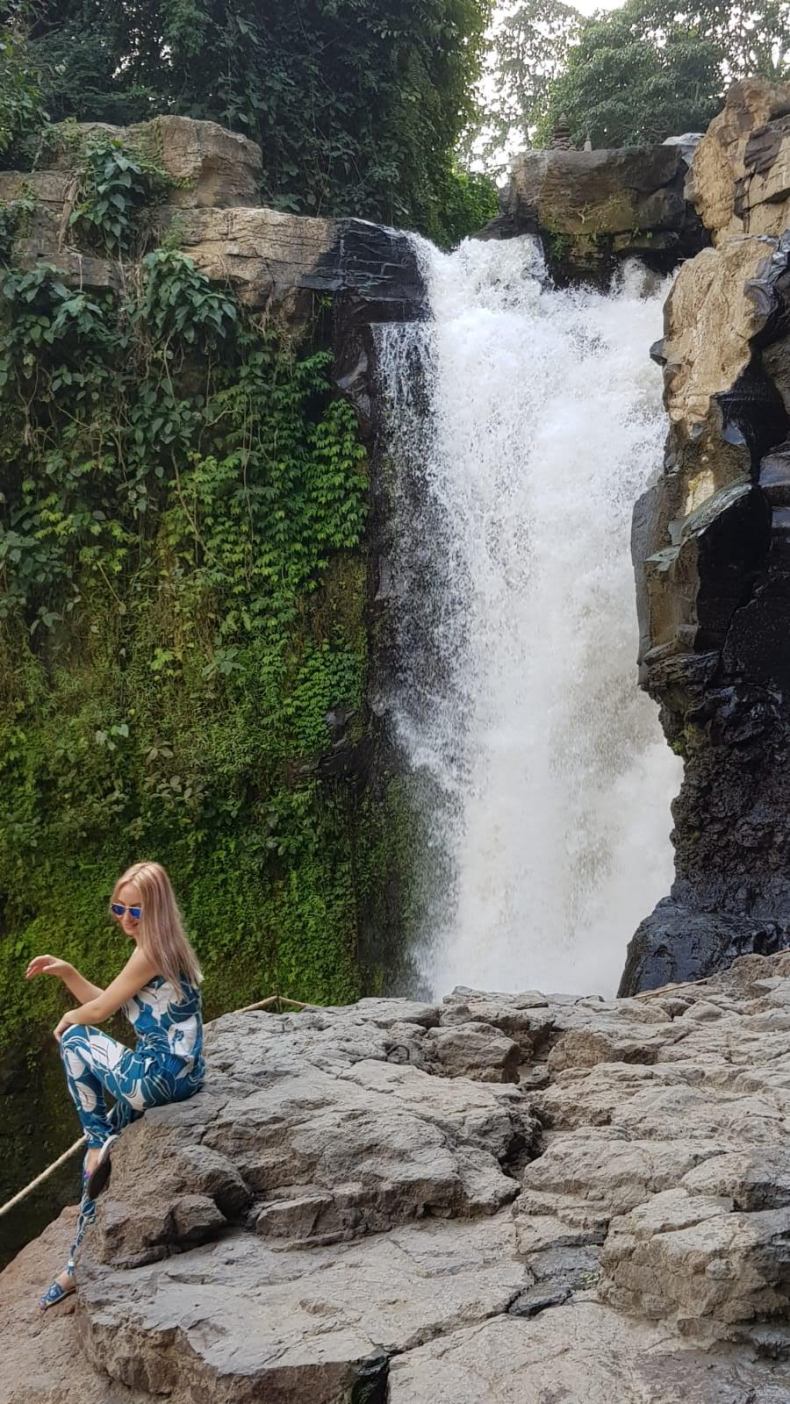
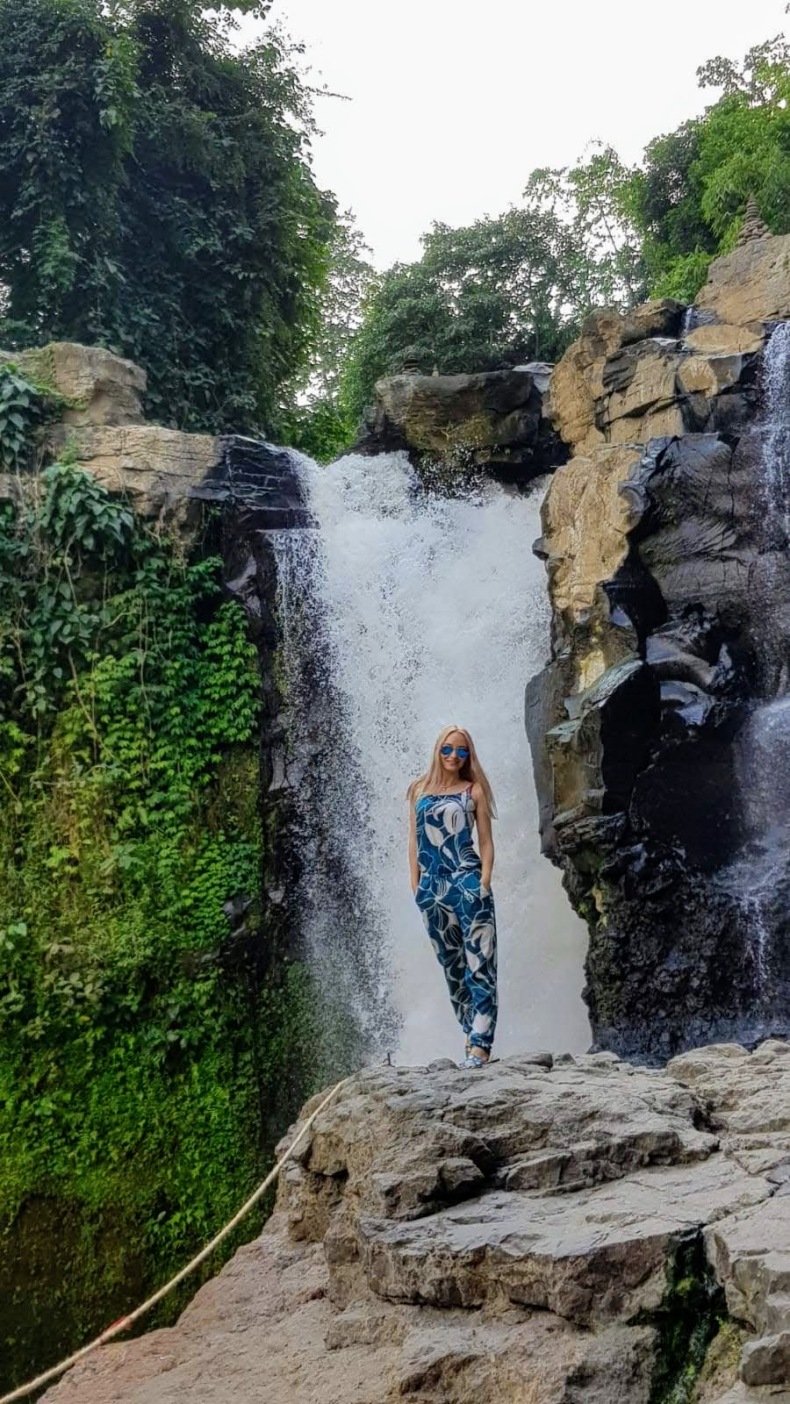
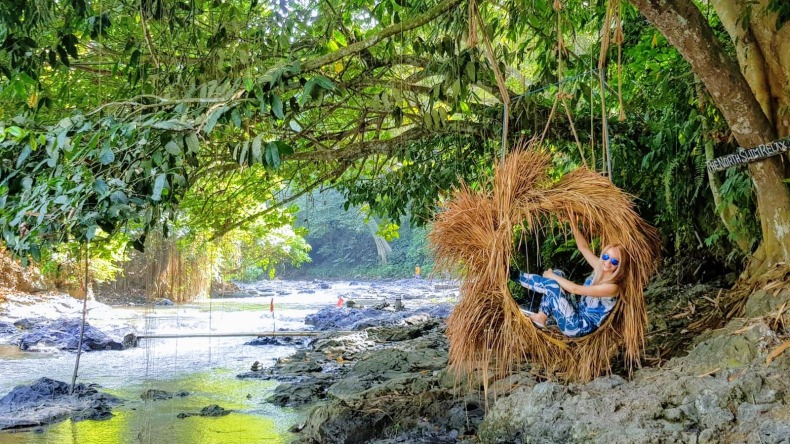
Lacul Danau Batur
If you can’t choose a trip that will give you the opportunity to see Lake Danau Batur, Mount Kintamani, and Agung Volcano up close, then you can stop for a delicious lunch, as we did, at the Grand Puncak restaurant Sariun where you will definitely not be disappointed by the amazing view.
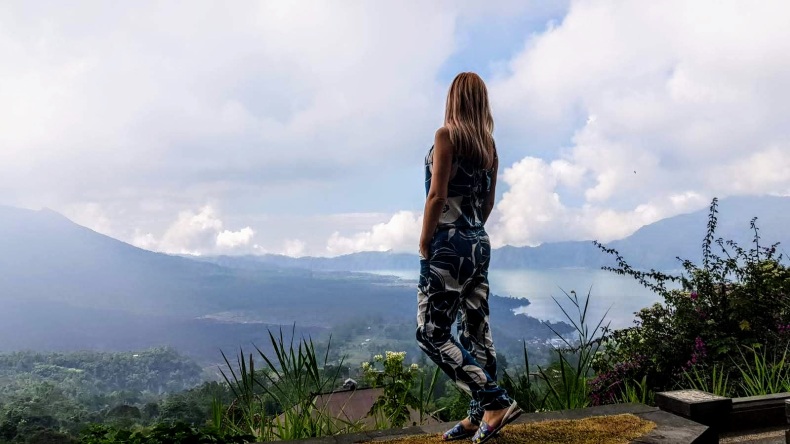
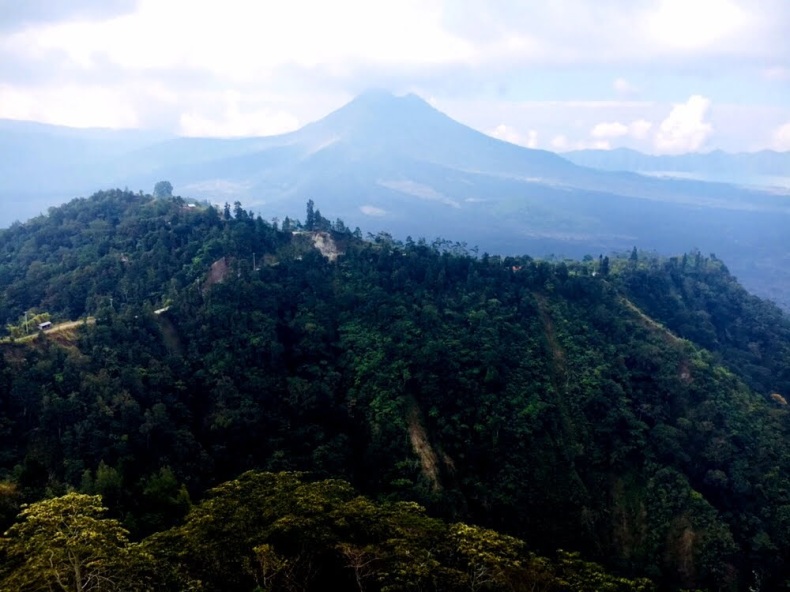
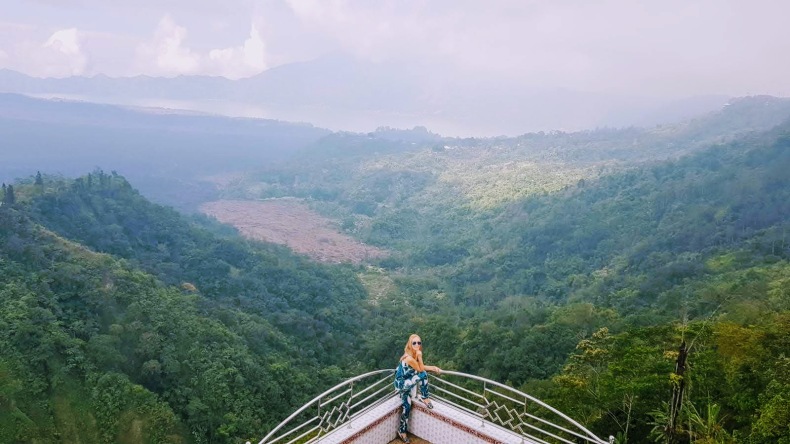
Tegallalang Rice Terrace
The rice terraces are famous for their beauty and for their irrigation system. Built in the form of steps they offer a splendid vista of rice fields. You can also see how the locals have grown rice for generations.
Because it is a very important attraction, the Balinese built some swings here that have now become very famous. So, dare to climb into one of the swings for an unforgettable experience!
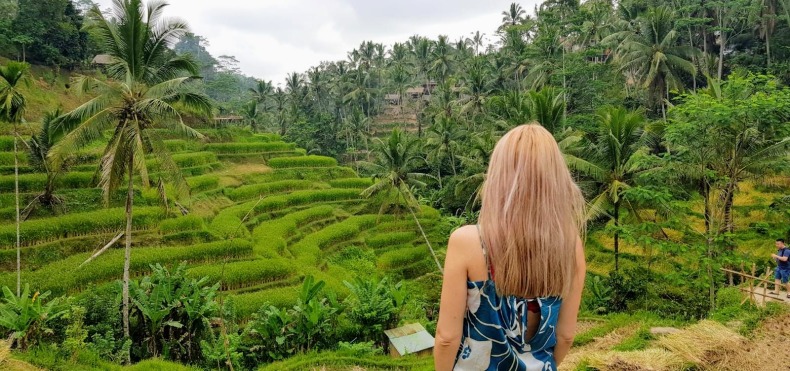



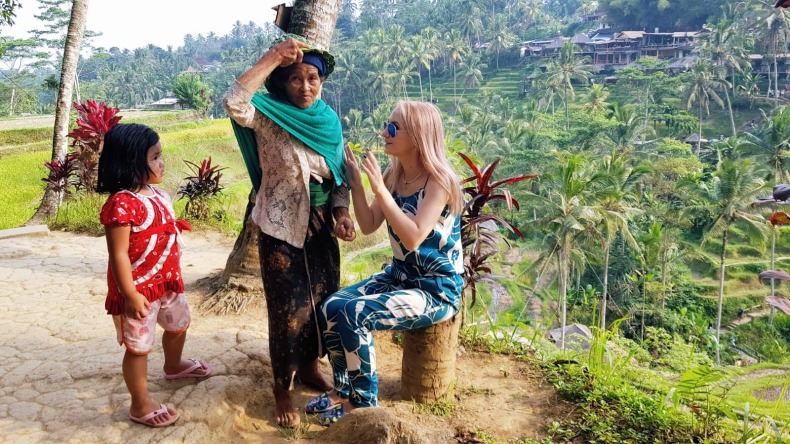
Bali Swing & coffee plantation
Bali Swing hosts numerous jungle swings between 10m, 15m, 20m and 78m above the ground. For a breathless experience, try the biggest one! Regardless of the chosen swing, you will have a spectacular view, even if the next day you may be sore in your arms from how much you gripped the cables of the swing (as I did) 😉
While you wait your turn at the swing you can try a delicious selection of teas and coffee from the plantation, with the main purpose of convincing you to buy at the end from their store. But not just any kind of coffee, but the most expensive. Luwak coffee is known as the most expensive coffee in the world due to its taste and quality. Luwak coffee is made from coffee beans ingested by the civet animal, but which it does not fully digest and thus reduces the bitter taste.
Of the teas, I really liked Mangosteen, which is why I bought a few boxes for home with Luwak coffee too. Of course, the prices are higher here, but we didn’t want to risk buying elsewhere, maybe at a lower price, but with questionable quality
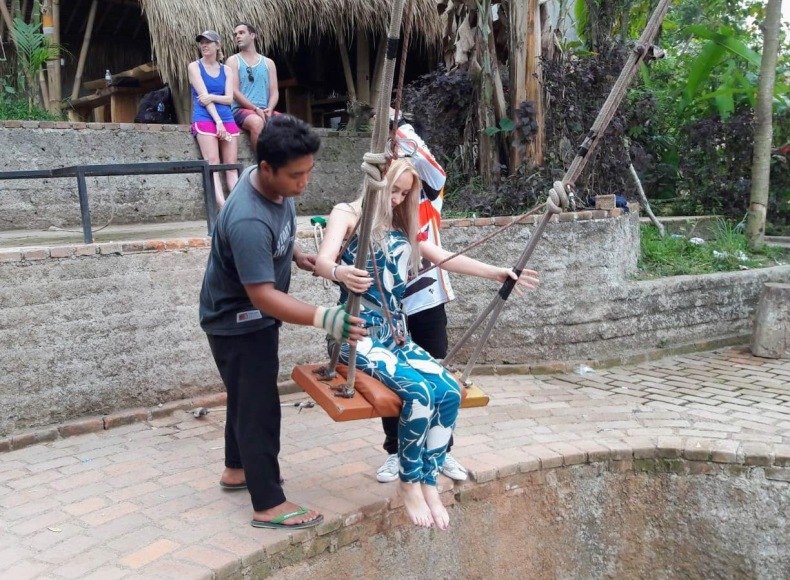
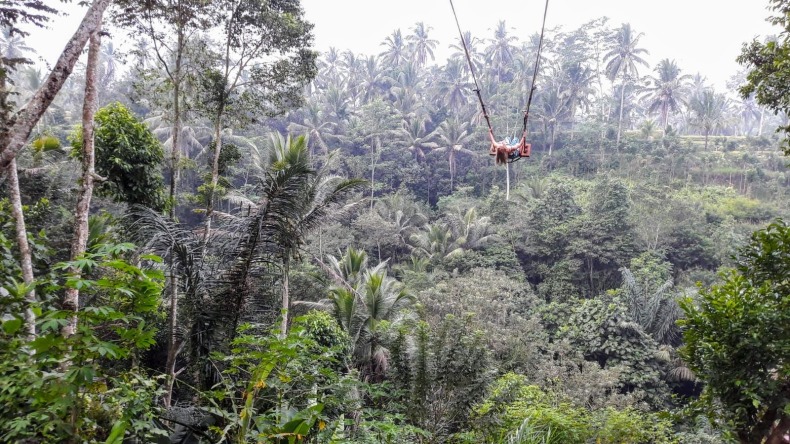
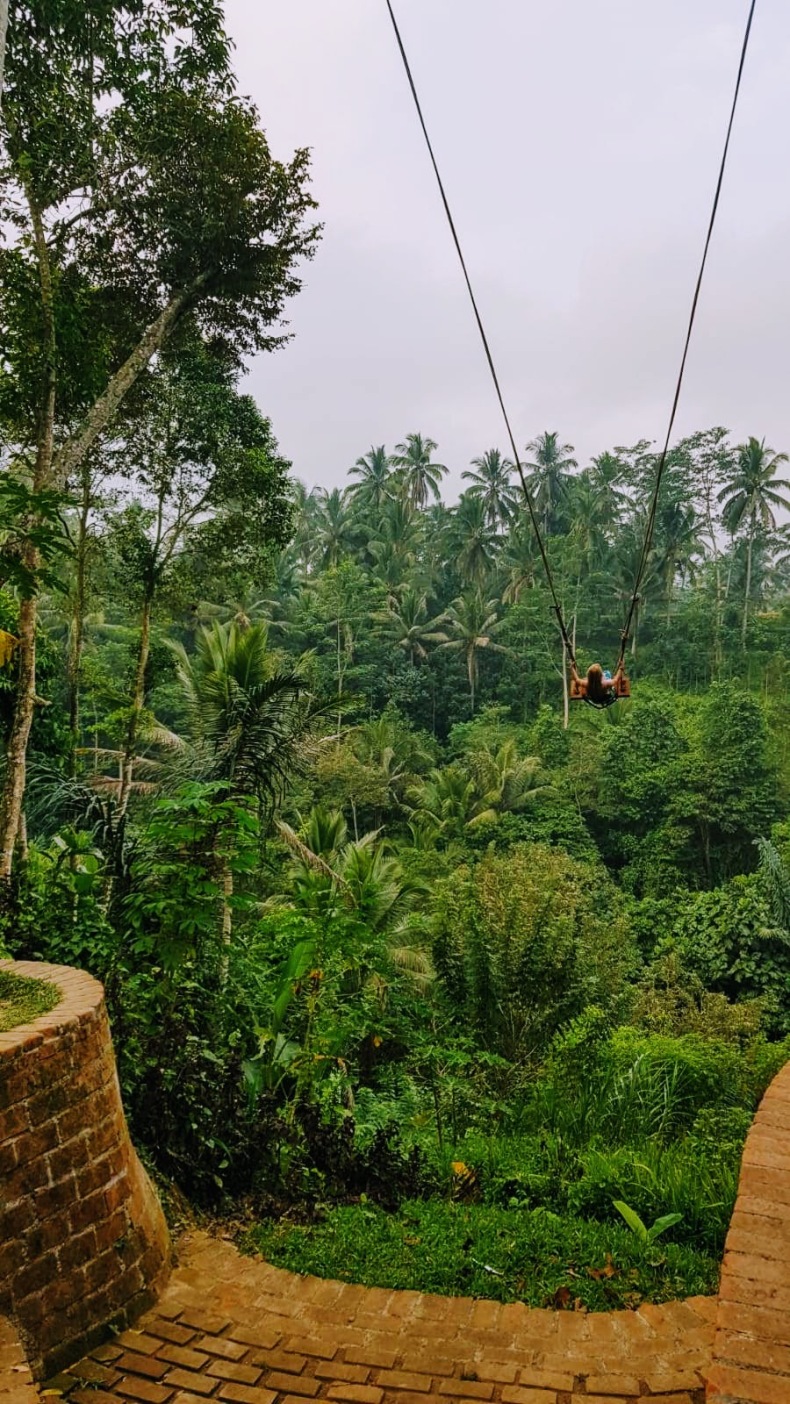
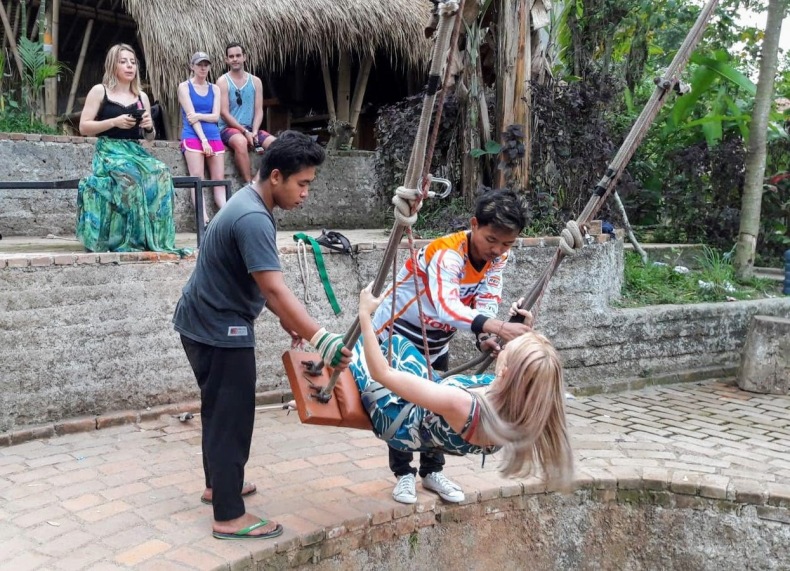

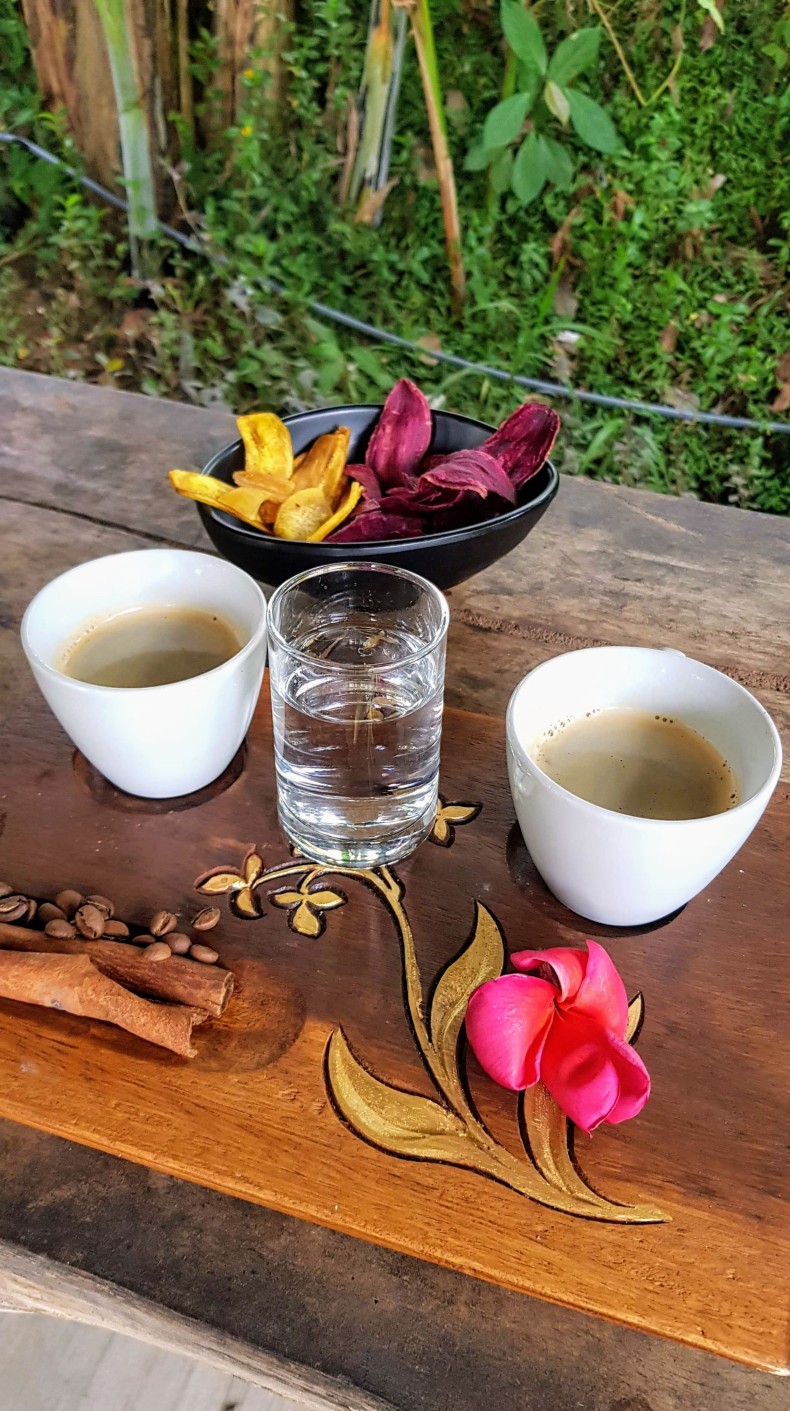
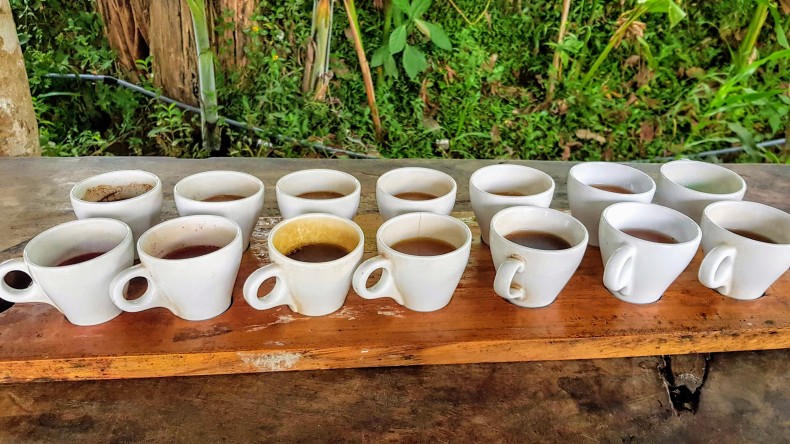
The next day in Ubud we started it with a delicious breakfast (as we did every day, by the way) taken in a hurry because the driver was already waiting for us. The route of this day was:
Mengwi Royal Family Temple
The temple was built around 1634 by the then ruler of the Mengwi kingdom, Tjokerda Sakti Blambangan. With Chinese architectural inspirations, the temple complex is considered the “mother temple” of Mengwi. You feel like you’re in another world here. You have a feeling of peace, relaxation and delight.
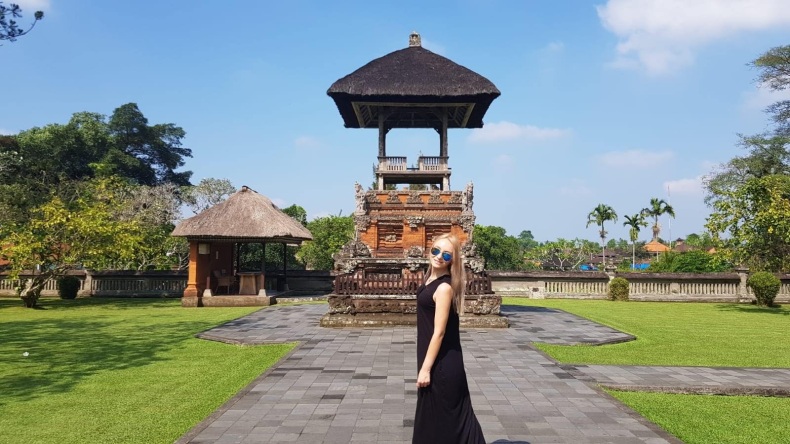
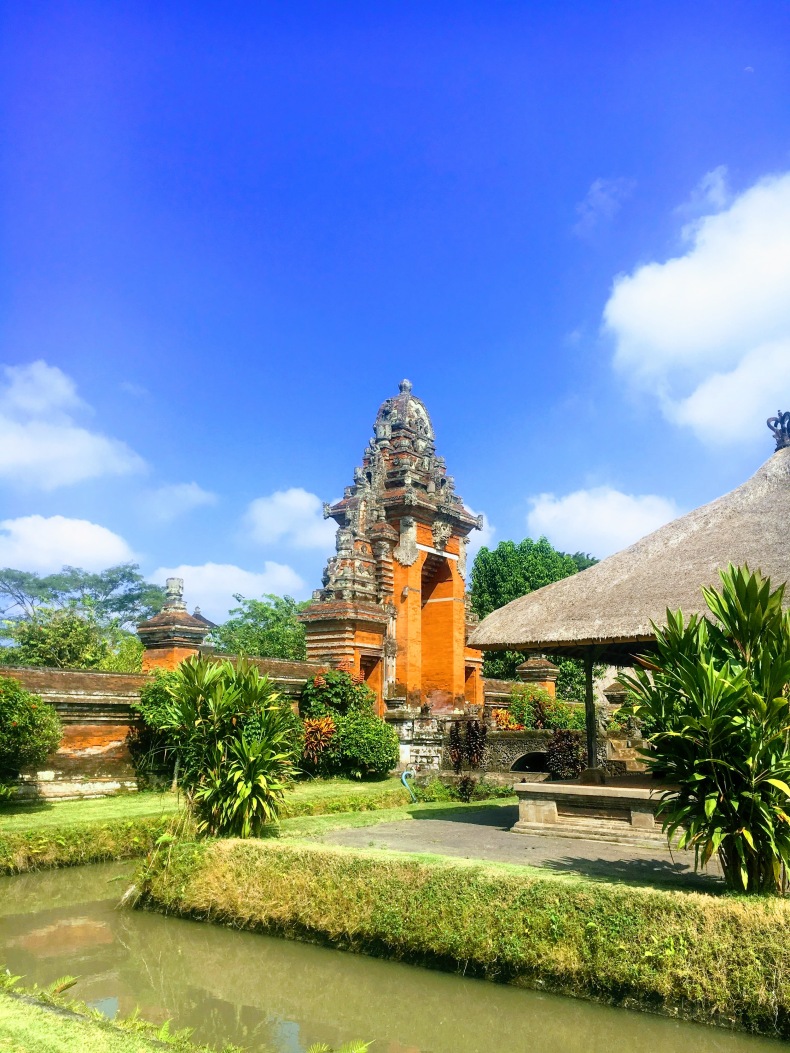
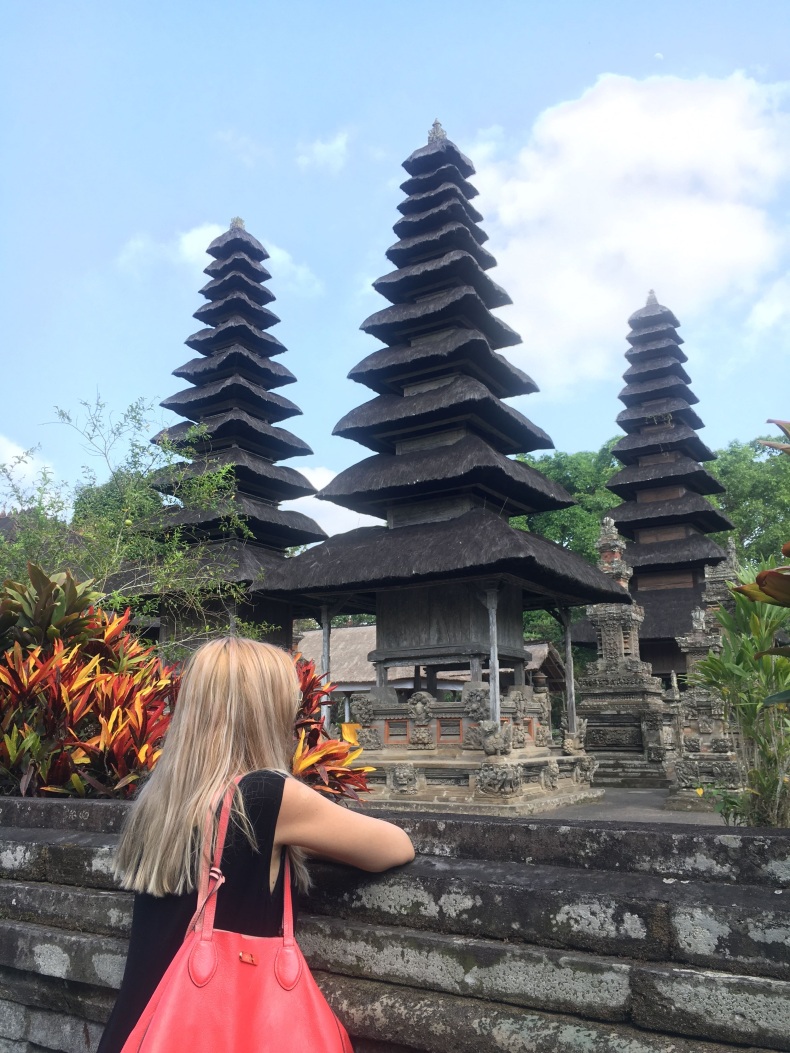

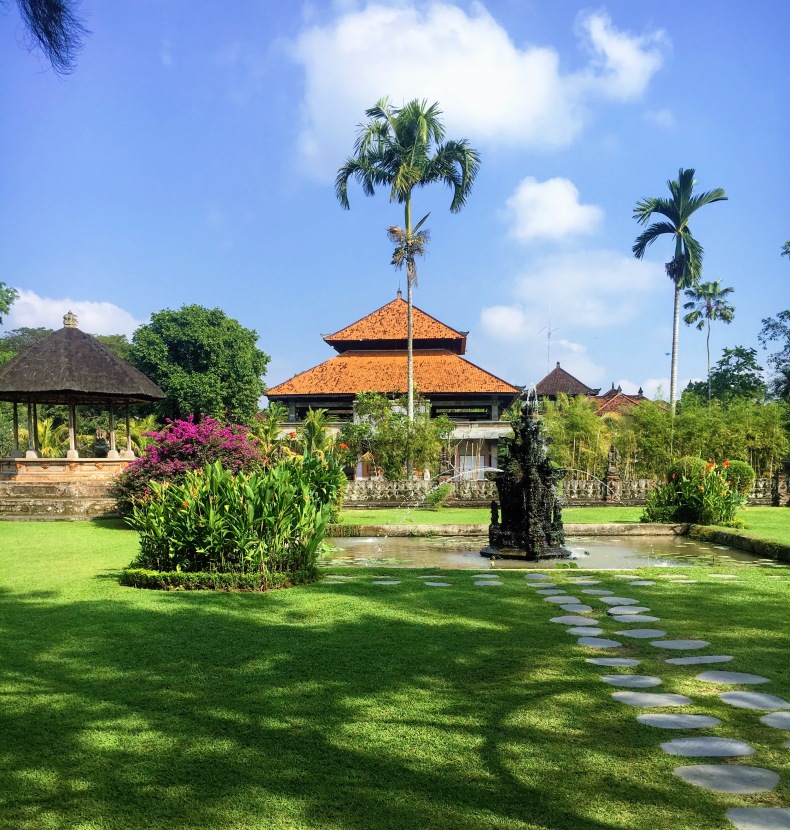
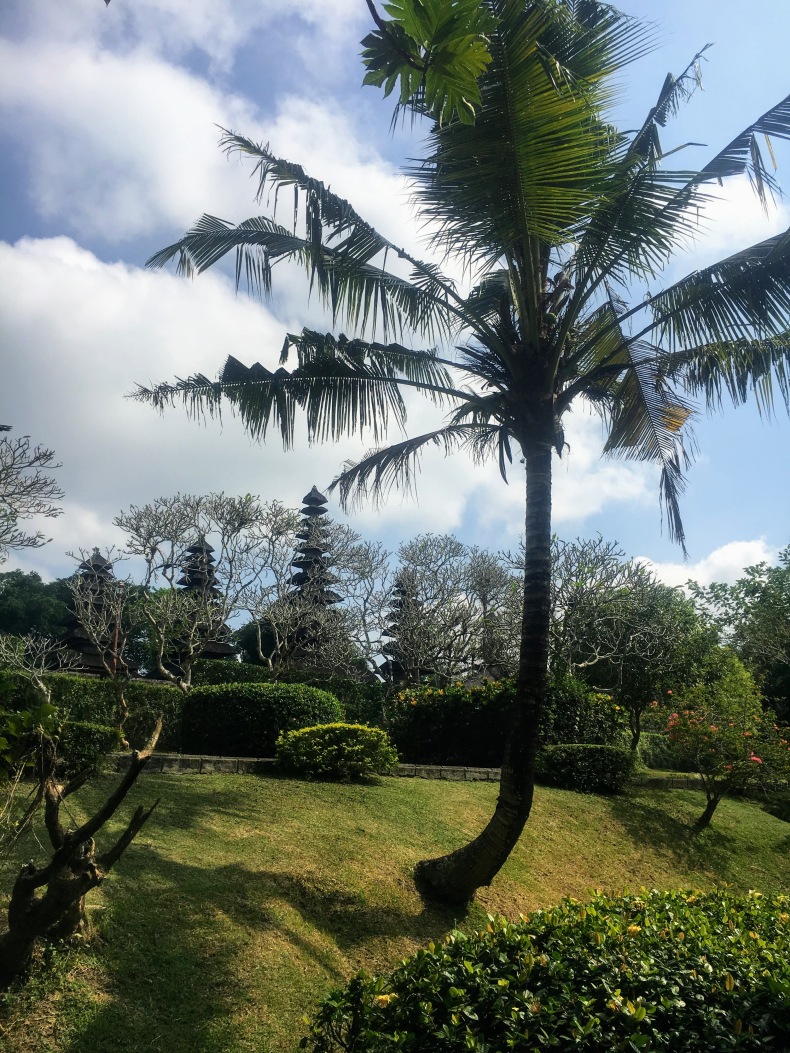
Tanah Lot
Tanah Lot is one of the most beautiful temples in Bali, probably due to its position. Sitting on a rock formation it offers an impressive view of the ocean and represents both the land (Tanah) and the sea (Lot). Try to visit it during low-tide so it is easier to walk to the temple!
What could be more beautiful than to look endlessly at the blue expanse of the ocean, the green of the trees and the foam of the waves crashing against the rocks, full of history and superstitions!
At the base of the rocky island, it is believed that venomous sea snakes protect the temple from evil spirits and intruders. Dewa Baruna, the protector of the seas and oceans is the deity associated with this temple.
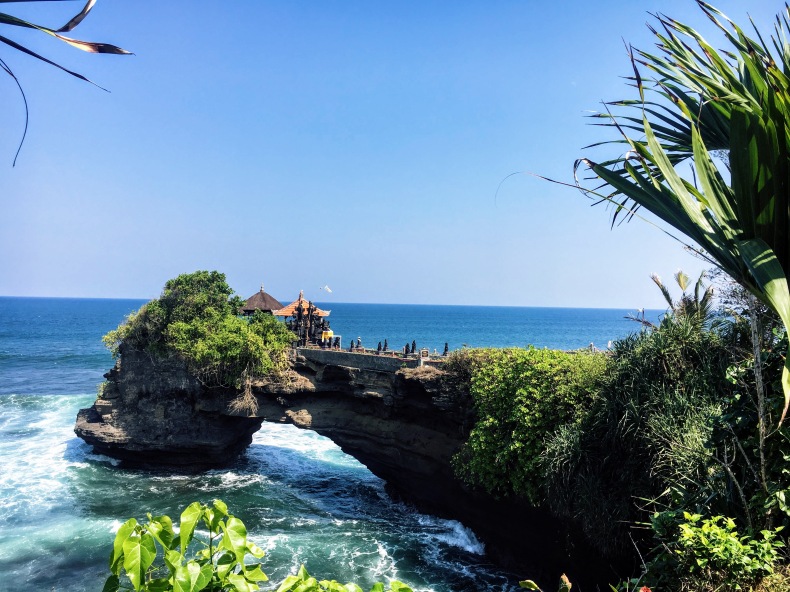
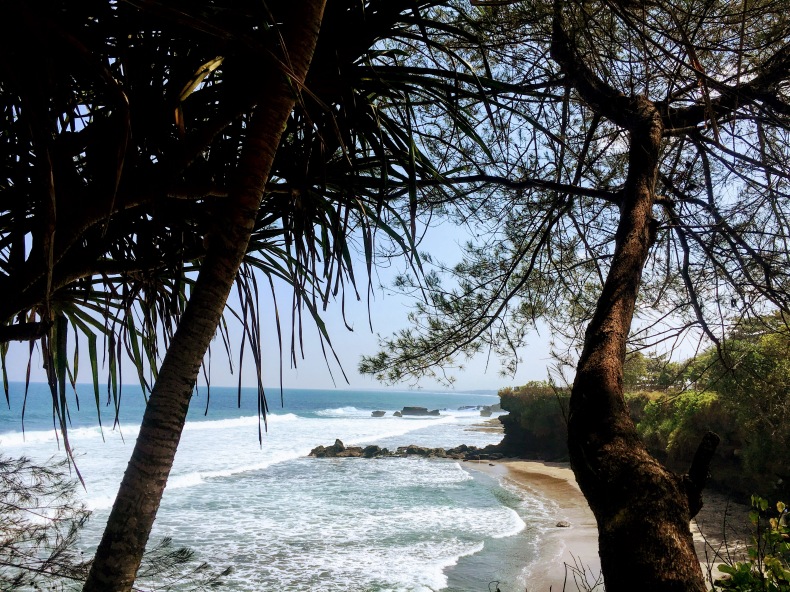


Ulun Danu Beratan Temple
This temple is also called the temple on the lake, because it seems to float when the water of Lake Beratan rises. It is dedicated to the goddess Dewi Danu, the protector of lakes and rivers, and is located between the mountains which often makes it shrouded in fog.
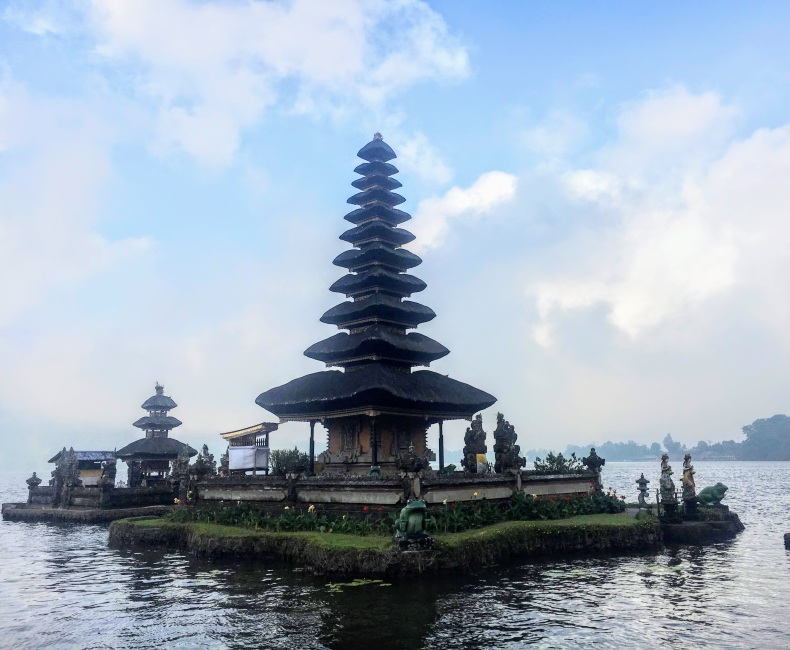
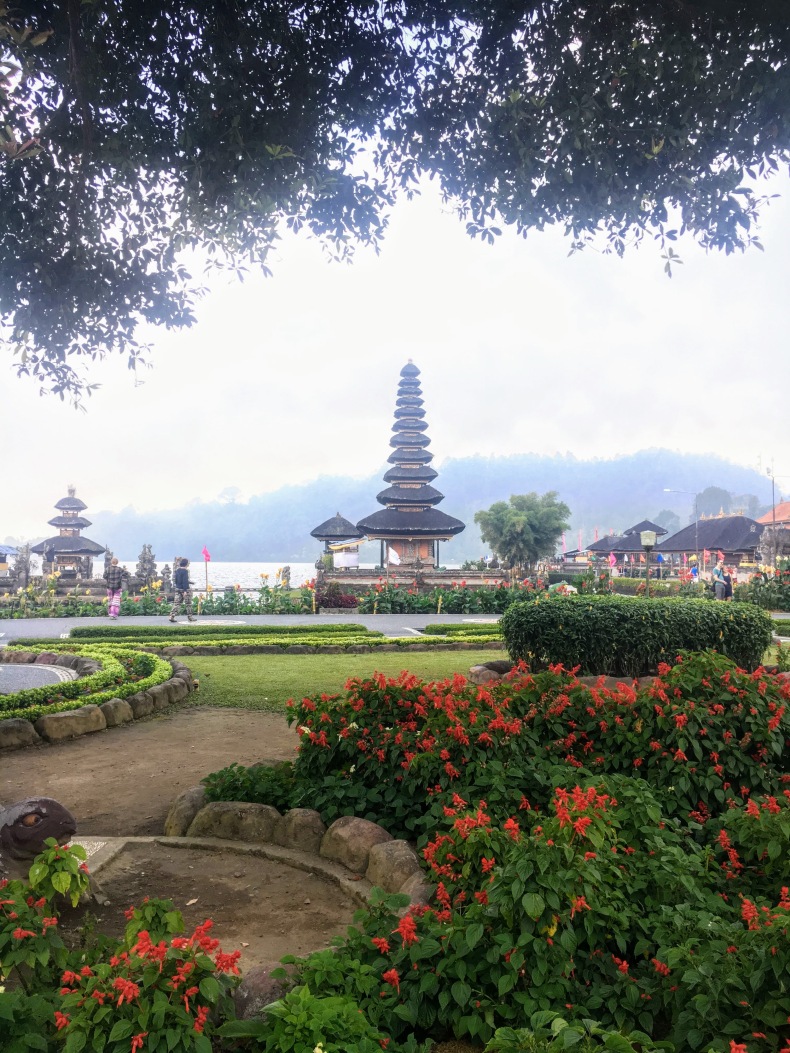
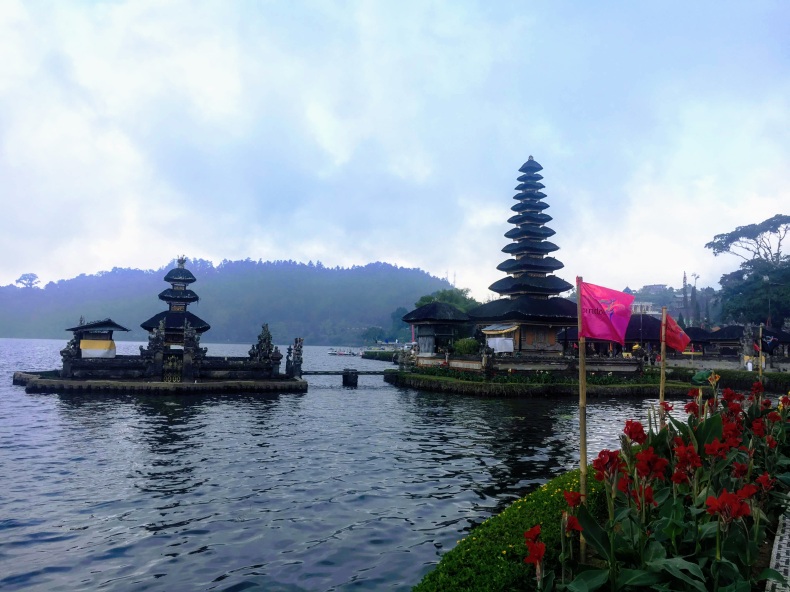
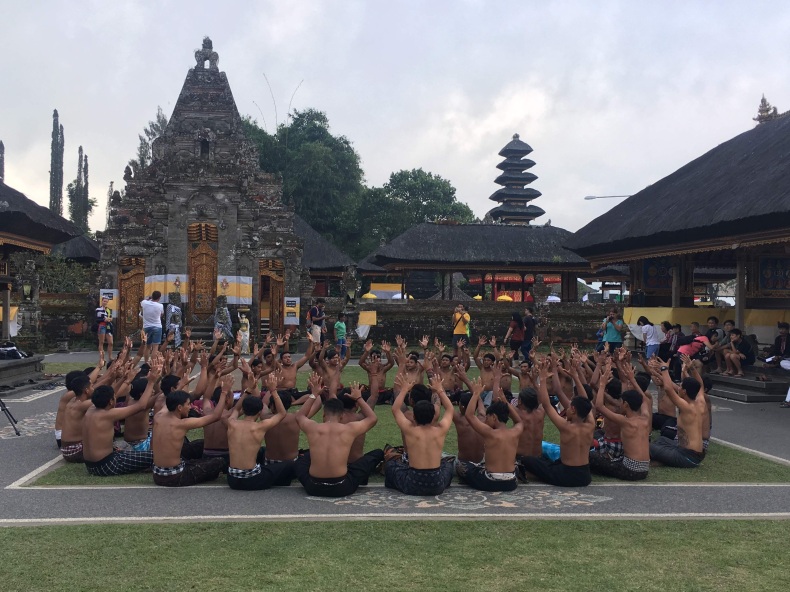
Hidden Hills Wanagiri
Another perfect place for Instagram photos is Hidden Hills where you can find another swing, a little smaller than in Bali swing, but with a special view.
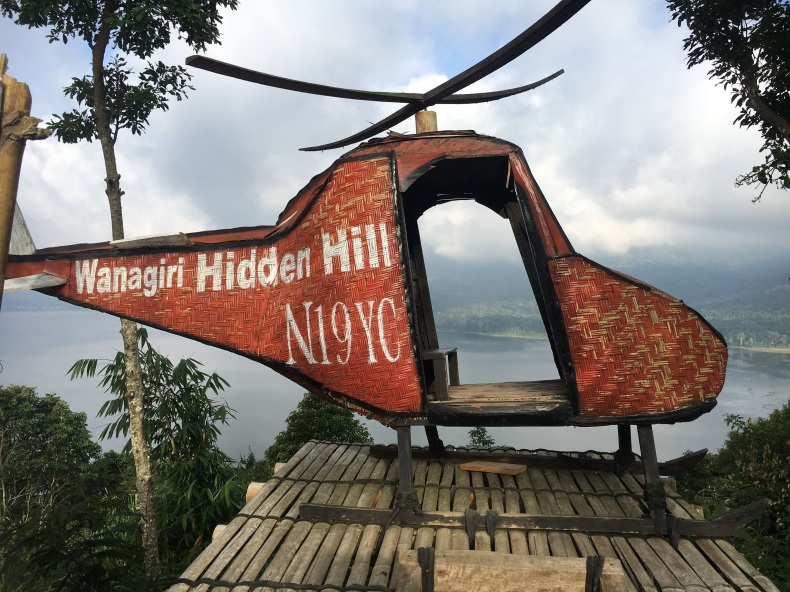
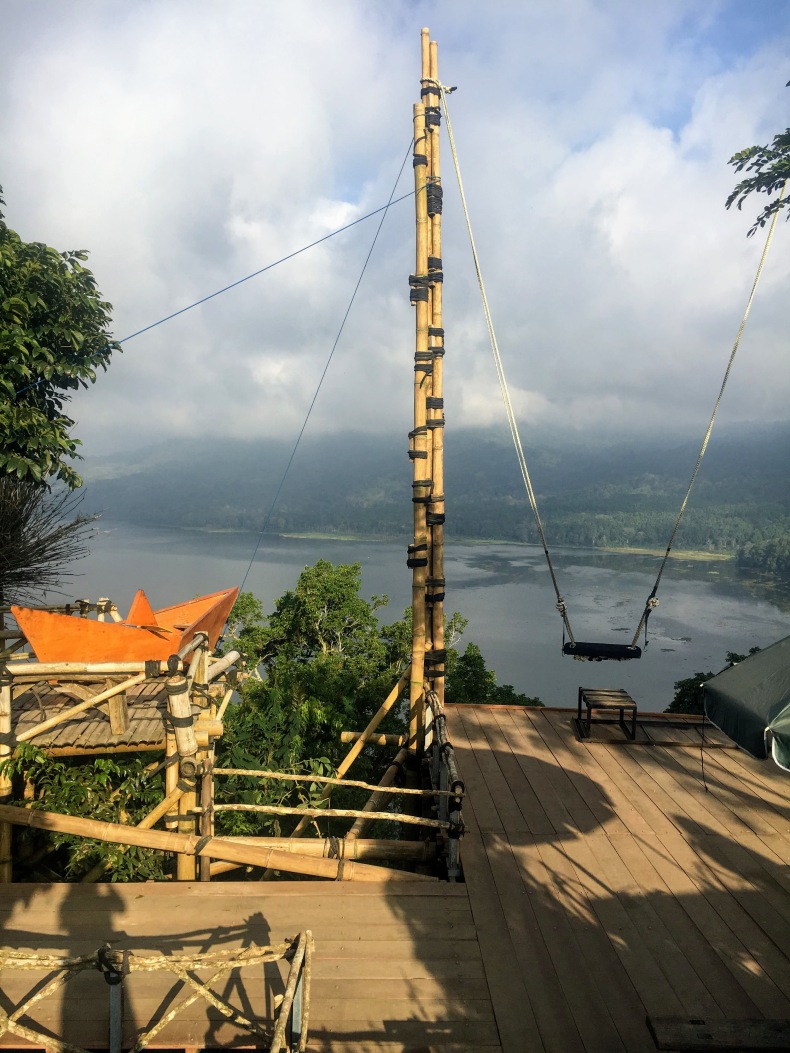
Unfortunately, at the last stop, Munduk Waterfall, we got lost in the forest for a while, as the driver could not find an entrance closer to the waterfall and left us quite far away. We still liked walking through nature, but as the sun set we decided to return to the car.
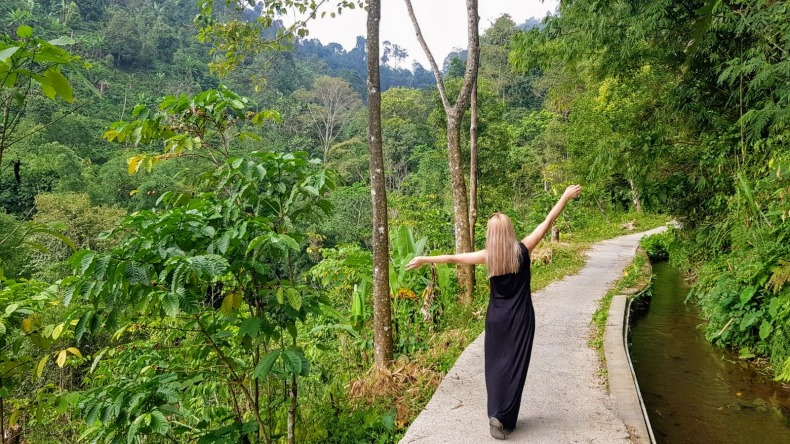
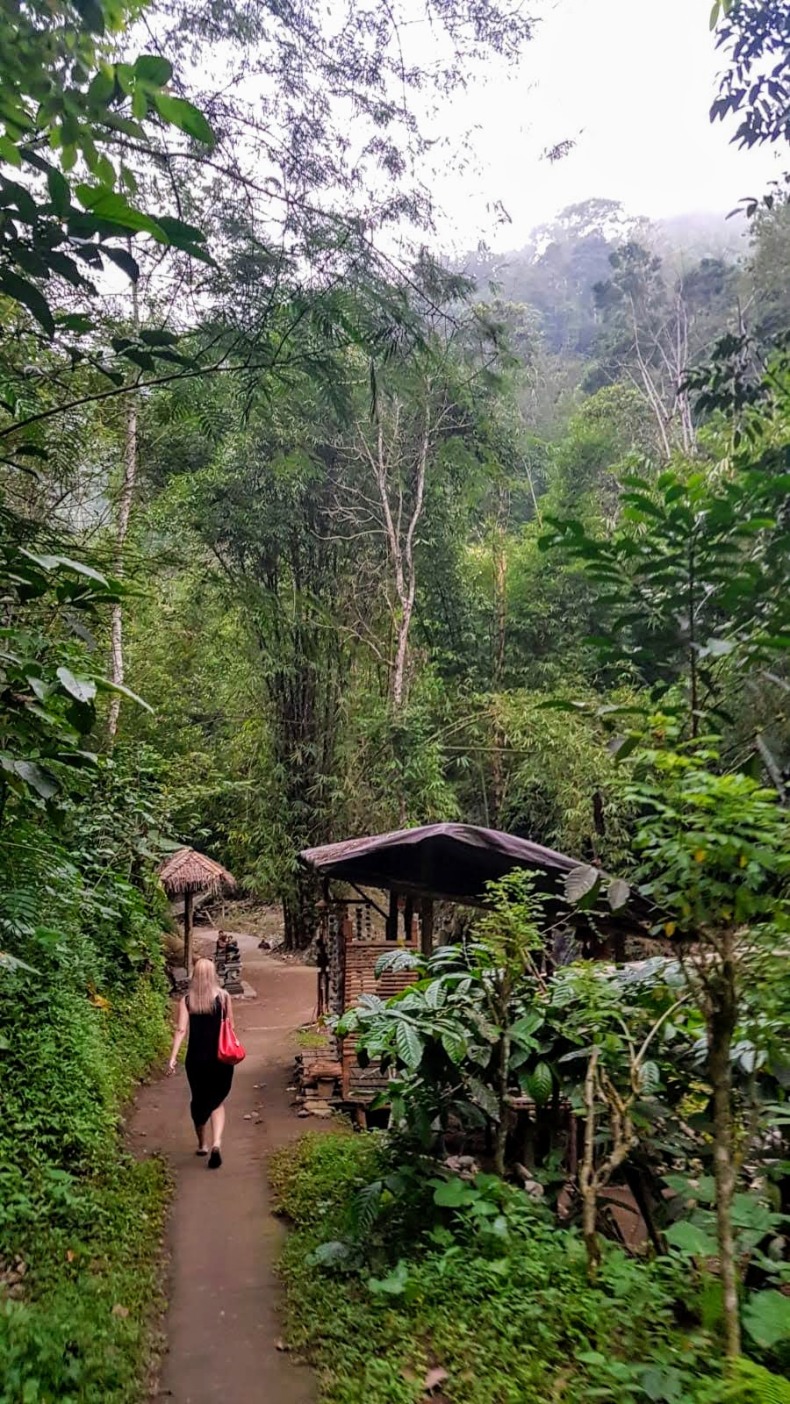
You cannot leave Ubud without visiting Ubud Market. It is the main place to buy any kind of souvenir and to practice your negotiation skills. So, don’t buy immediately, and especially without trying at least to negotiate a little!
Good to know:
- The vaccine against typhoid fever and hepatitis A and B is recommended, but not mandatory. Therefore, we did not do it;
- It is good to have mosquito spray with you;
- The dress code should be decent when you visit the temples, even if in many of them you will receive a sarong with which to cover your legs or shoulders. In one temple I was met with the bizarre requirement that girls put their hair up as loose hair was prohibited;
- The food is very tasty, based mainly on rice and vegetables, but what I liked most were the fruits that had a sensational taste. Fresh mango juice was the highlight of this holiday;
- In Ubud people are much more welcoming than in the more touristy beach areas, where we met a few who tried to fool us and seemed even more aggressive. So, I recommend that you be very careful in general, especially with taxis!
- There are no means of public transport on the island;
- A local from Ubud advised us to be very careful in Kuta (where we were planning to visit) if we go to a club, as there are people who can spike your drink. I admit that it scared us a bit and, although Kuta is famous for its nightlife, we decided not to go to clubs. By the evening we felt exhausted after so much walking everywhere anyway;
- Prices are very affordable, both for food and accommodation;
- Don’t miss a Balinese massage, especially one with chocolate.
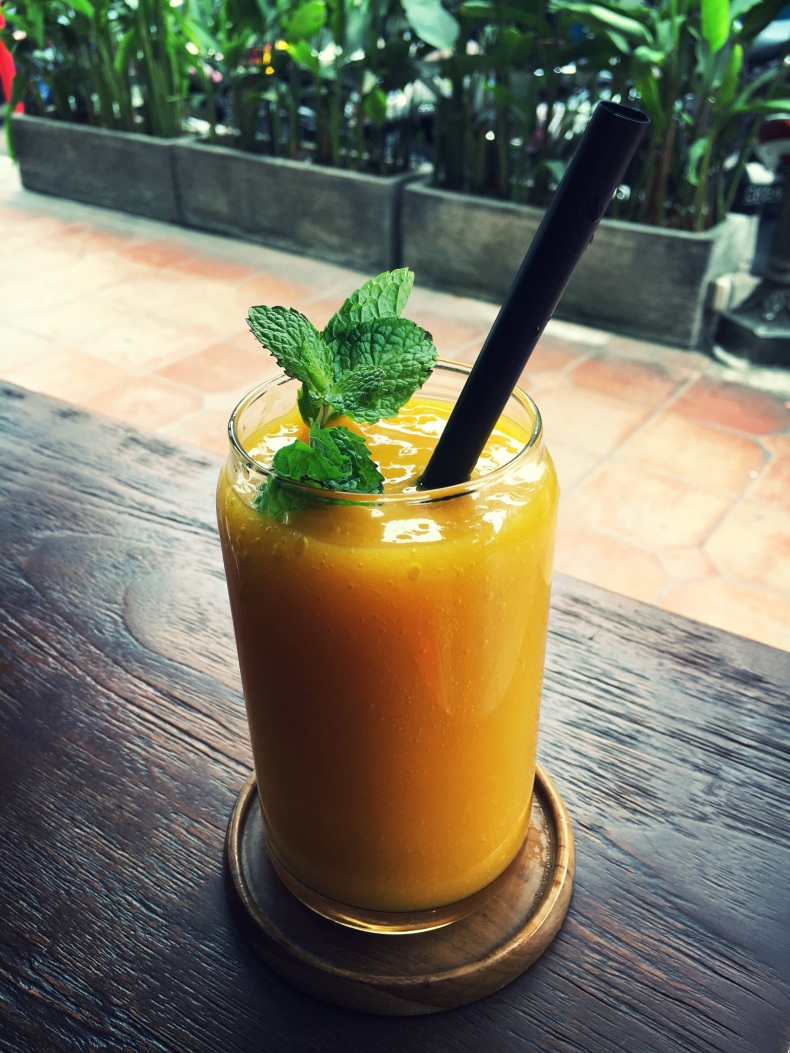
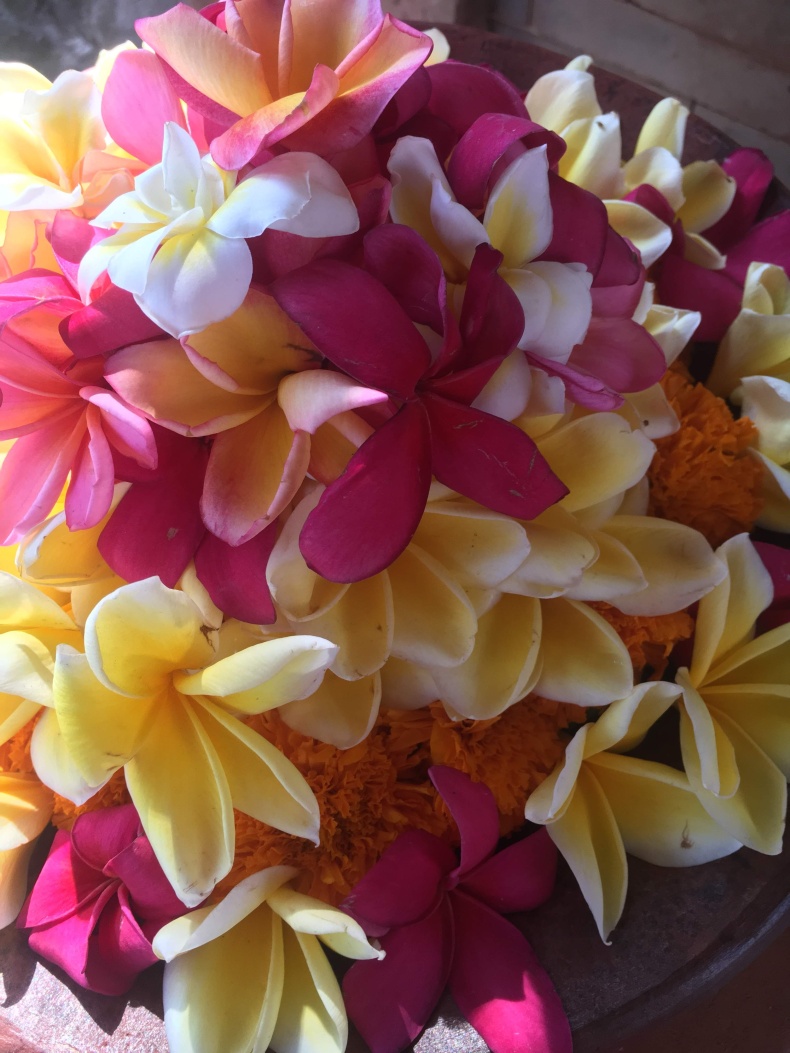
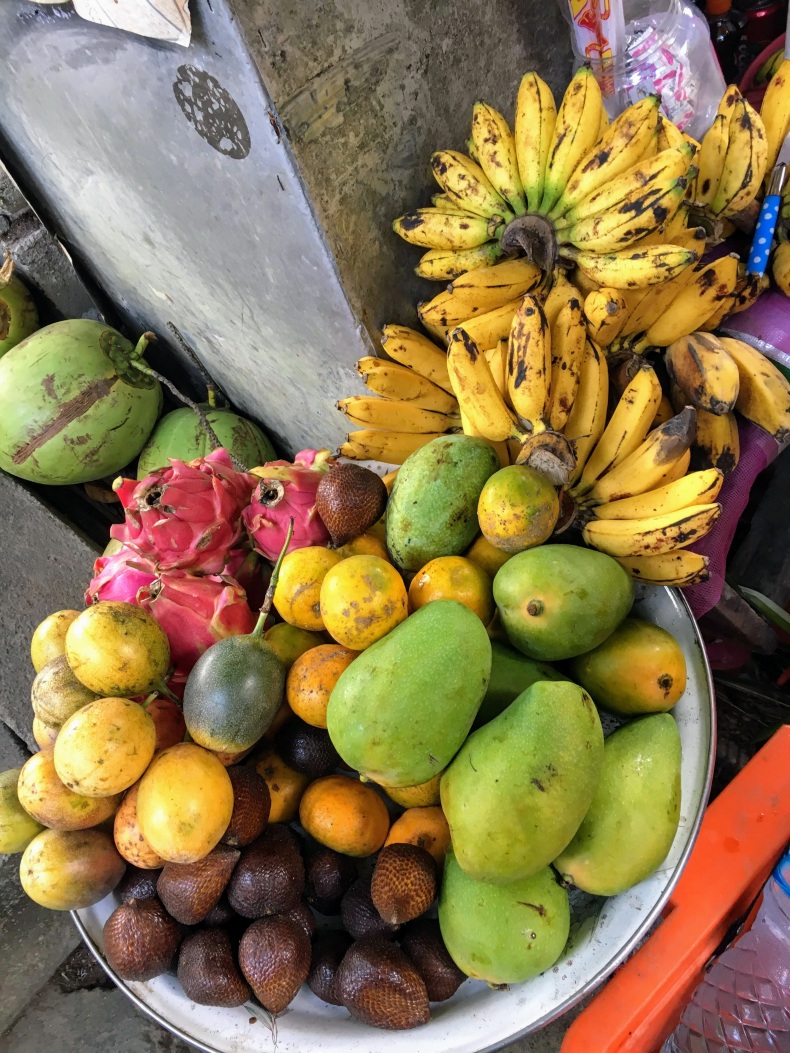
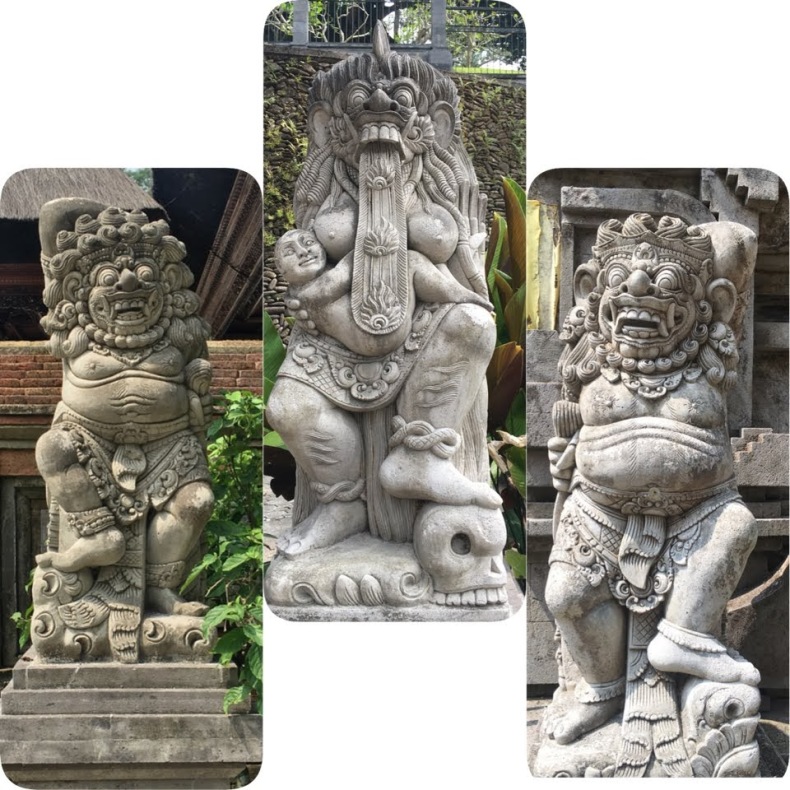
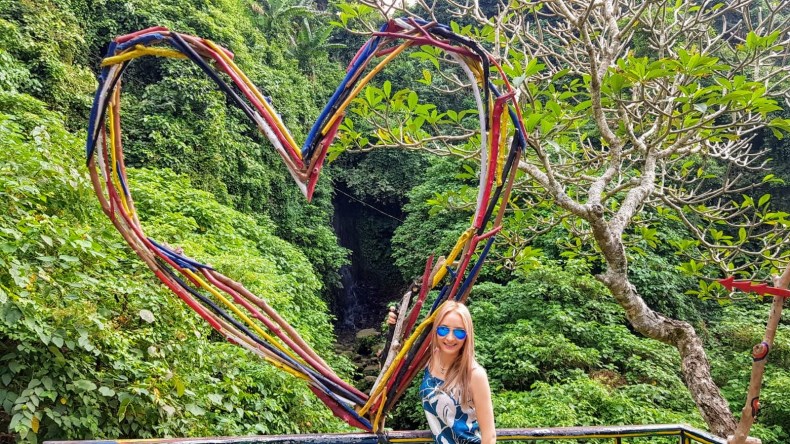



[…] Bali – The Island Of The Gods […]
Nice